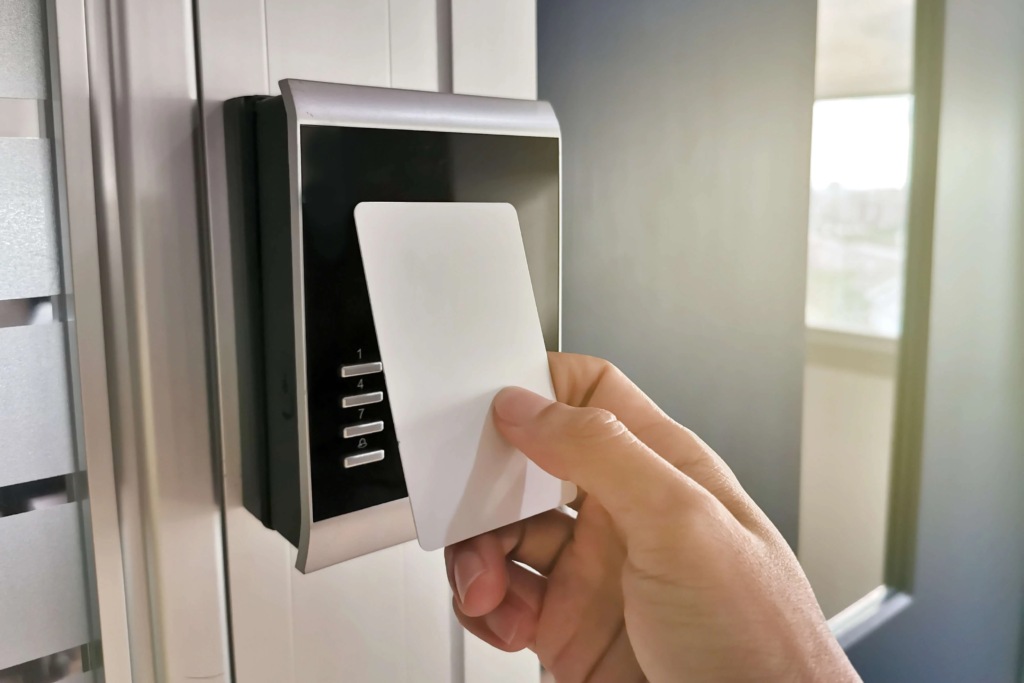
Proximity Card vs. RFID Card: What’s the Difference and Which One is Right for You?
Many people confuse the proximity card with an RFID card. Both technologies support everything from office security to cashless payments, but the scope, security, and cost differences are still misunderstood. Whether you are protecting a proximity-based research lab or automating retail checkouts, choosing the right system can impact operational efficiency and long-term scalability. This blog will cut through the noise and provide actionable insights for decision-makers. Let’s start with the basics.
What Is a Proximity Card and How Does It Work
A Proximity card(Prox Card) is a contactless smart card used in access control systems. So, how does a Proximity card work? It emits a low-frequency radio signal that can be detected by a reader, allowing access to a secure location. The card has a unique identifier. The system reads this identifier when the card is within range of the reader. Proximity cards are widely used for office, residential, and restricted area access.
Proximity cards use radio frequency identification (RFID) technology but typically operate at a lower frequency (usually 125 kHz), resulting in a shorter operating range. When you bring the card close to the reader, the reader sends a signal to the card. The card responds by transmitting its unique ID. Access is granted if the ID matches the one stored in the system.

Understanding An RFID Card and Their Functionality
RFID cards, or Radio Frequency Identification cards, use a broader frequency range, typically around 13.56 MHz for high-frequency RFID. RFID technology involves a reader emitting an electromagnetic field that powers the card, allowing it to send data back. Depending on the power source, it can be passive, active, or semi-passive.
While proximity cards also use RFID technology, the key difference lies in range and frequency. RFID systems can support short—and long-range communication depending on the application. RFID cards are used in various tasks beyond access control, including tracking goods, managing inventory, and enabling payment systems.
Key Differences Between The Proximity Card and RFID Cards
When choosing between proximity and RFID cards, it’s essential to understand their range, security, and cost differences. Here are the key distinctions:
- Range: Proximity cards usually operate within a range of about 5 to 10 centimeters. In contrast, RFID cards can range up to several meters, especially in HF and UHF systems.
- Security: Proximity and RFID cards offer secure access, but proximity cards are more vulnerable. The low-frequency communication makes them easier to intercept. RFID cards, especially HF and UHF cards, provide stronger security with encryption protocols and longer read ranges.
- Cost: Proximity cards are cheaper due to simpler technology. RFID cards, especially HF RFID cards, are more expensive because of the advanced technology.
Proximity Cards in Access Control Systems
Proximity cards have long been a favorite for access control. Many offices, universities, and government buildings use them to regulate entry. Their simplicity, low cost, and reliable performance make them ideal for such environments.
The limited range of proximity cards reduces the chance of accidental access. However, if security is a top priority, RFID cards may be a better choice. RFID cards offer more robust encryption options and a higher level of security.
Proximity cards work best for situations that don’t require advanced security. They are great for controlling entry to offices, parking lots, or storage areas. If high-level security isn’t crucial, proximity cards are a solid choice.

RFID Cards for Payments and Inventory Management
RFID cards excel in applications needing longer ranges, higher security, and advanced functionality. One of the most popular uses of RFID cards today is in cashless payment systems. RFID-based cards are used for public transportation and contactless payments at retail stores. They allow for quick, secure transactions without physical contact.
RFID cards are also ideal for inventory management and asset tracking. Businesses can track their items in real time by attaching an RFID tag to products or equipment. This improves operational efficiency and reduces the risk of theft or loss. RFID’s longer read ranges enable automated systems, making them perfect for large operations like warehouses and retail supply chains.
Which Technology Is Right for Your Application
When choosing between proximity and RFID cards, align the technology with your needs. Proximity cards are a reliable and cost-effective solution for access control systems. They work well in environments with moderate security needs, where ease of use is a priority. If you need a simple employee identification or building access solution, proximity cards are the way to go.
RFID cards are better for businesses needing advanced capabilities. RFID’s versatility allows it to serve beyond access control, including payment systems and inventory management. RFID cards are better if your business requires higher security, automation, or scalability.

Custom Solutions with DCCO
At DCCO, we understand that every business has unique needs. We offer proximity and RFID cards with customization options to fit your requirements. Whether you need a basic access control system or a sophisticated RFID solution for inventory tracking, we can tailor our cards to meet your needs.
In addition to offering standard cards, we provide customization options in design and functionality. Our cards can integrate with your existing systems, and we offer flexible solutions to businesses of all sizes. Our expertise ensures you receive the best application product, exceptional customer service, and support.
Choosing between a proximity card and an RFID card
Choosing between proximity and RFID cards depends on your application and needs. Proximity cards are ideal for simple access control, while RFID cards offer greater flexibility and security for various uses. The right choice will improve operational efficiency, security, and scalability.


